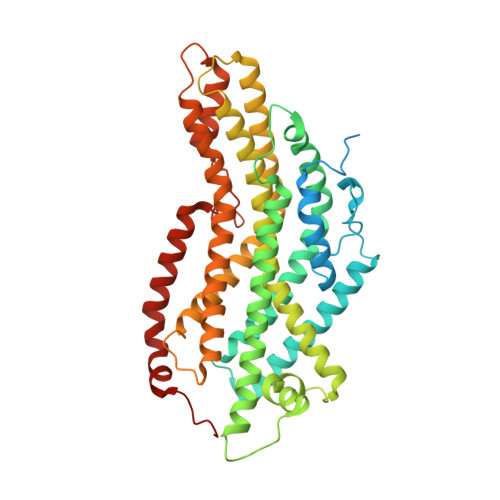Structural basis for sugar perception by Drosophila gustatory receptors.
Ma, D., Hu, M., Yang, X., Liu, Q., Ye, F., Cai, W., Wang, Y., Xu, X., Chang, S., Wang, R., Yang, W., Ye, S., Su, N., Fan, M., Xu, H., Guo, J.(2024) Science 383: eadj2609-eadj2609
- PubMed: 38305684
- DOI: https://doi.org/10.1126/science.adj2609
- Primary Citation of Related Structures:
8JM9, 8JMA, 8JME, 8JMH, 8JMI, 8X82, 8X83, 8X84 - PubMed Abstract:
Insects rely on a family of seven transmembrane proteins called gustatory receptors (GRs) to encode different taste modalities, such as sweet and bitter. We report structures of Drosophila sweet taste receptors GR43a and GR64a in the apo and sugar-bound states. Both GRs form tetrameric sugar-gated cation channels composed of one central pore domain (PD) and four peripheral ligand-binding domains (LBDs). Whereas GR43a is specifically activated by the monosaccharide fructose that binds to a narrow pocket in LBDs, disaccharides sucrose and maltose selectively activate GR64a by binding to a larger and flatter pocket in LBDs. Sugar binding to LBDs induces local conformational changes, which are subsequently transferred to the PD to cause channel opening. Our studies reveal a structural basis for sugar recognition and activation of GRs.
- Department of Biophysics and Department of Neurology of the Fourth Affiliated Hospital, Zhejiang University School of Medicine, Hangzhou, Zhejiang 310058, China.
Organizational Affiliation:


















